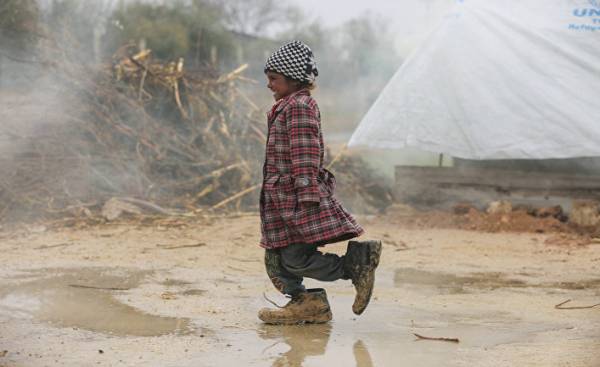
Is the seventh year of the war in Syria, the country continues to deteriorate the humanitarian and economic situation. In these conditions many children are forced to work to support themselves and their families. All this, of course, has negative consequences for Syrian children.
According to UN reports, around 168 million children in the world aged from 10 years to 18 years employed in the labour market, 85 million of them work in dangerous conditions. Most of these children live in areas of armed conflict and unrest. The share of working Syrian children in employment is 20% compared to 10% to the Syrian revolution. This means that the number of children who entered the labor market against the backdrop of war in Syria has doubled.
With regard to the work performed by children is that it is often hard, exhausting activities that do not correspond to the weak Constitution of the child. So, some children are engaged in cargo transportation or carry out loading and unloading operations. In addition, they are engaged in maintenance of vehicles. It should be noted that children join one or another of the conflicting armed groups in Syria that made international organizations dealing with children, to raise the alarm. These organizations warn about the possible consequences of child labour and its impact on physical and psychological health of the child. Moreover, child labor negatively affects the education of children because they are forced to leave school to devote himself to the work.
The reason that forcing Syrian children to work, as the income level of their parents which becomes insufficient in terms of increased prices in Syria. In particular, the daily expenses of the family are 3,000 Syrian Lira, the equivalent of 6 dollars, while the average income of a resident of Syria is not more than 1,500 lire, forcing the heads of poor families to employ their children.
Some Syrian families have lost fathers, breadwinners during attacks of public places in the liberated territories. The number of orphans in Syria is estimated at 800 thousand children. Usually in such families the mother in domestic work. They help her children who also work to support the family livelihood.
Another group of orphans are those who lost not only a father but also a mother. Some organizations deal with their accommodation in children’s homes, which provide them with the necessities of everyday life, satisfying their needs for food, clothing, education and medical care. However, many children are less fortunate and they are forced to live with relatives, who often bring them to work to enhance the income of his family.
These are some of the aspects of the situation of child labour in Syria, which has become a necessity to ensure that the child and his family a livelihood. All of the above require intervention by local and international organizations protecting the interests of children, to prevent further aggravation of the problem and help them realize their rights among which right to education and protection from abuse and exploitation.







